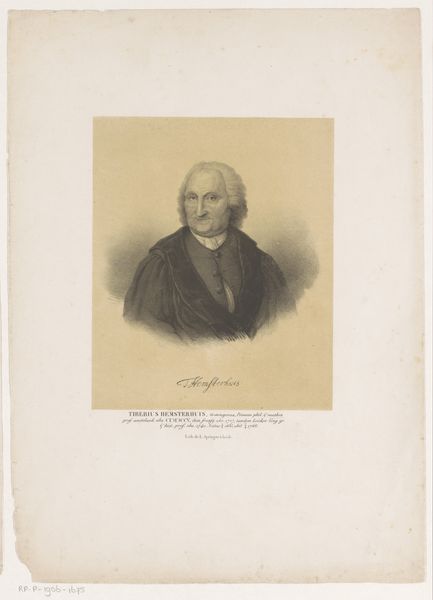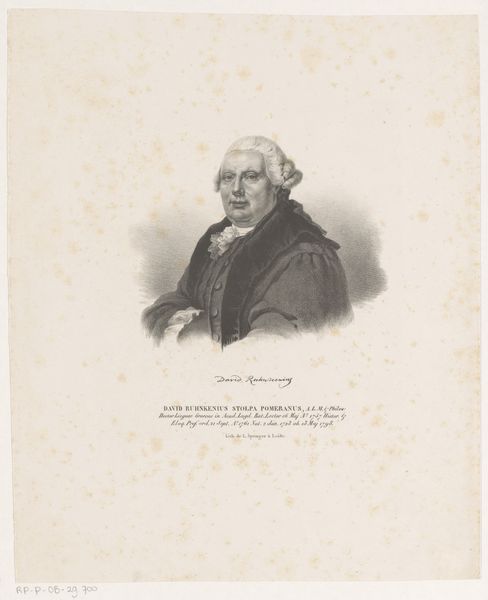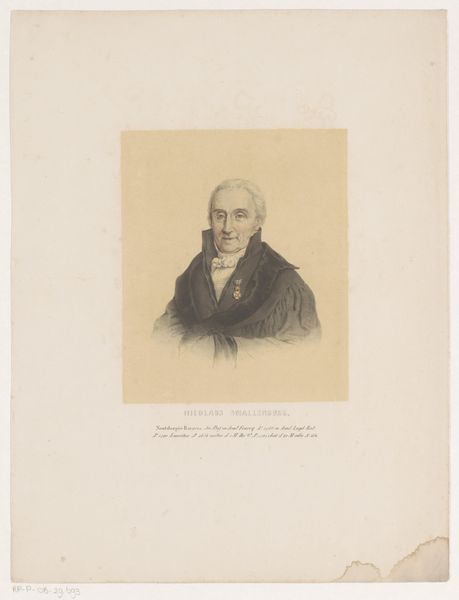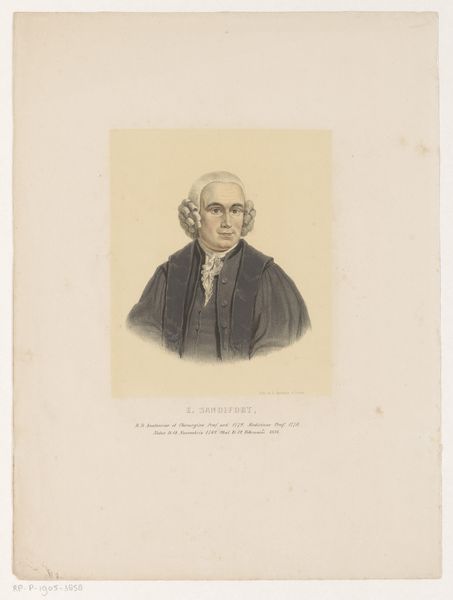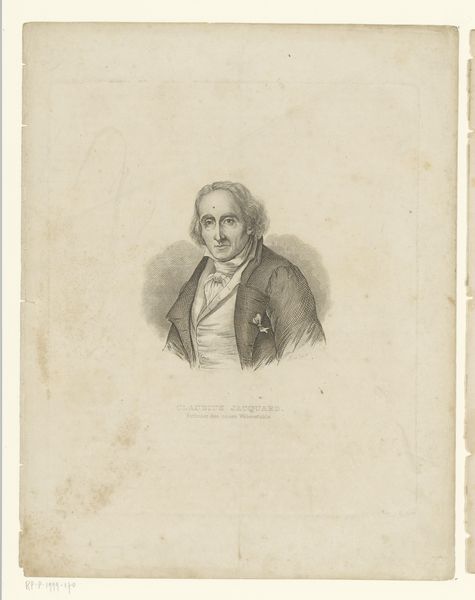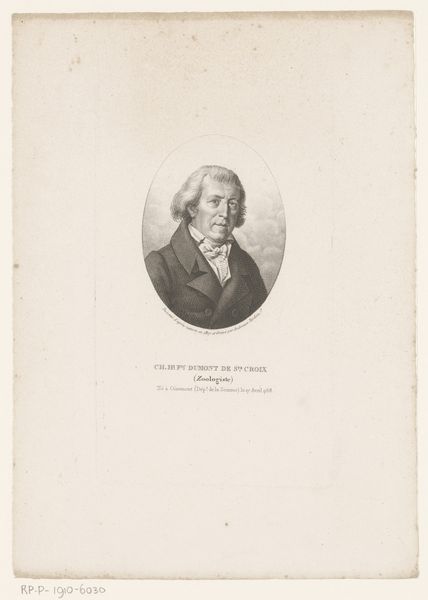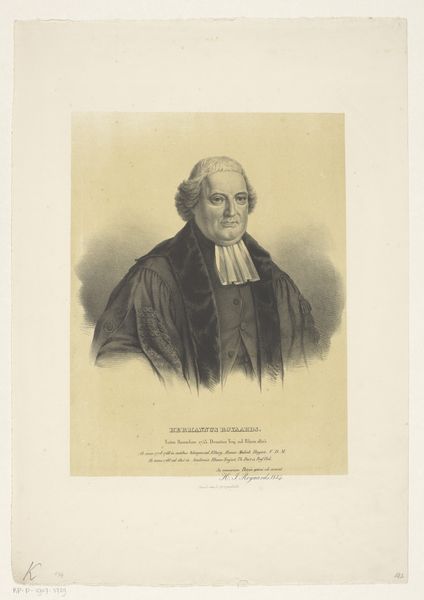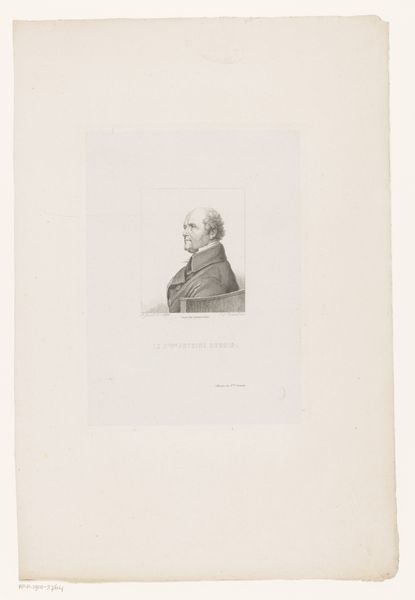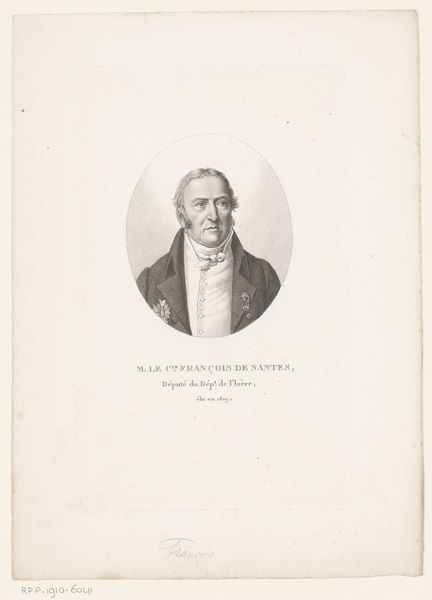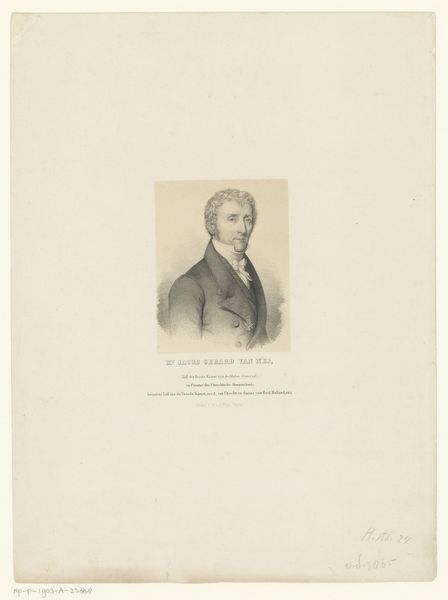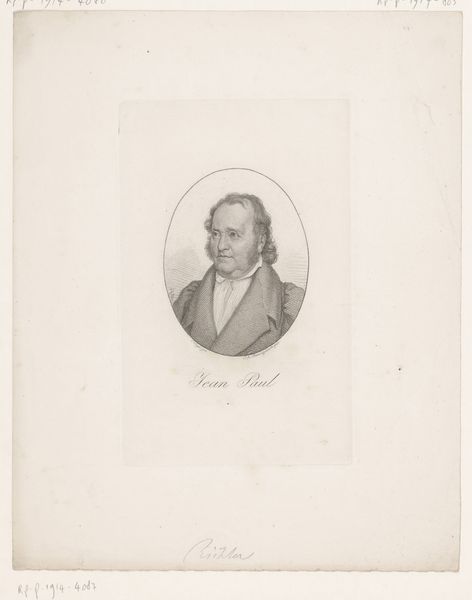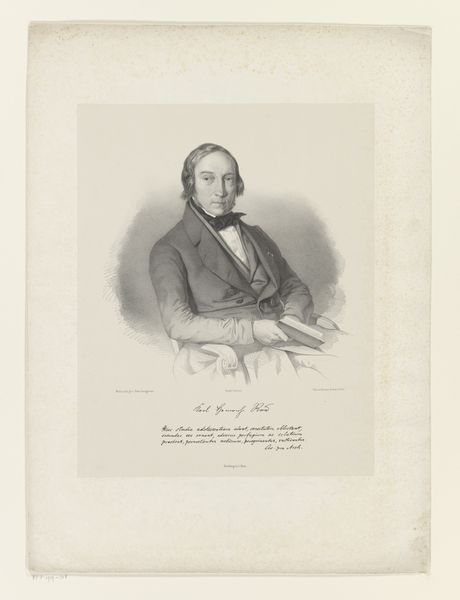
etching, engraving
#
portrait
#
neoclacissism
#
etching
#
old engraving style
#
pencil drawing
#
history-painting
#
engraving
Dimensions: height 360 mm, width 272 mm
Copyright: Rijks Museum: Open Domain
Curator: It's fascinating to consider "Portret van Tiberius Hemsterhuis," an etching made around 1850 by Leendert Springer. The detail captured is just astounding. What's your initial reaction? Editor: There's a certain somber dignity. He seems...weighted down by the world, maybe? Or is it just the heavy clothing and the formality of the setting? The high contrast between light and shadow lends the portrait a sense of drama, wouldn't you agree? Curator: It definitely leans into that classical sensibility, almost theatrical in its presentation. The Neoclassical movement really emphasized that grandeur, even in portraiture. To me, the engraving conveys a sense of academic authority – someone very secure in their place. Do you see that conveyed somehow by his face? Editor: Absolutely, especially when we look through the lens of historical context. The subject's confident gaze and formal attire communicate power dynamics. His elevated social standing, academic prestige – it's all right there in the deliberate composition. It definitely resonates in the way that he's looking straight at the viewer, unblinking. Curator: And it's not just a recording, but an active assertion of that position, even now, centuries later. I suppose art lives until somebody sees it. He almost invites a critical gaze with that unblinking stare. Editor: Exactly. This is where things get complicated. What does it mean to celebrate someone of privilege in a time when we are increasingly challenging power structures? Do we divorce the artistry from the potentially problematic aspects of Hemsterhuis' social context? Curator: Maybe we can appreciate the engraving as an incredible technical achievement without endorsing all aspects of its subject's historical circumstances. This print holds both artistry and potential avenues of critical dialogue in tandem. Editor: I agree, it forces a dialogue between admiration, history, and the constant reevaluation of whose stories we amplify through art. And there it is, staring back at us! Curator: Yes! And the conversation is never really over, is it? Each of us brings our perspective to this encounter and find something new in this dance between the artist, the sitter, and us.
Comments
No comments
Be the first to comment and join the conversation on the ultimate creative platform.
